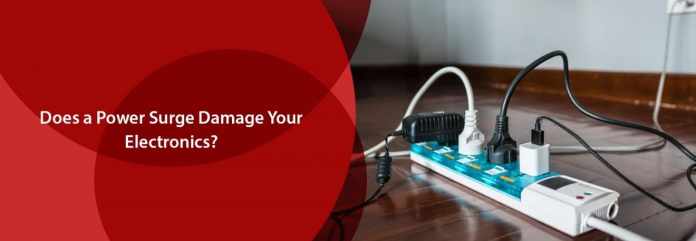A power surge is a serious problem especially if you’re living in an area where there are continuous electricity fluctuations. Perhaps you may have experienced being unable to switch on your TV when there’s a power cut due to a thunderstorm – now this is because of a power surge.
Electricity surges instantly overload and short circuit home electronics and almost anything that is plugged into a power socket. Even if it doesn’t cause damage to your power to choose electric at that moment, it can gradually damage them over time.
In the United States, houses usually use electrical power at 120 volts, 60 hertz in a single phase with an alternating current. However, there’s no guarantee that it’ll be supplying electricity at the same power constantly.
An alternating current causes the voltage to rise and fall in an almost predetermined rhythm. The voltage would oscillate from 0 to 169 volts, and it’s quite a difference. Hence, most electronic appliances in the United States are designed to be able to withstand this range of voltage.
But when there’s a power surge, the voltage will eventually exceed 169 volts. So to answer your question “Does a power surge damage your electronics?” Yes, it does. A spike in voltage is more than likely to harm the electrical devices and appliances in your home.
A power surge is an invisible culprit that may be causing harm to your devices. Which is why we’ll be sharing with you how to protect your appliances from being damaged by a power surge. Let’s begin.
What Causes a Power Surge?
A power surge usually originates when an electric utility company conducts power grid switching. This is just one example but a more common reason for a power surge, especially ones that are most powerful, is lightning.
A power surge that happens because of lightning, will indefinitely damage your electrical appliances and devices. In this scenario, a power surge will take the path through a satellite dish cable or cable TV, telephone lines, or an electrical service line.
Power surges can also occur within your home itself when heavy appliances such as refrigerators, air conditioners, and motors turn off and off. Ultimately, power surges can enter your house through more than one pathway.
There are typically three types of power surges – large, low-level, and small power surges. Large power surges can cause immediate damage by “frying” your circuits and melting metal and plastic parts. Fortunately, this type of power surge rarely occurs.
Low-level power surges won’t blow fuses or melt parts, but they have the ability to cause an “electronic rust”, which is that it’ll gradually degrade internal circuitry until it eventually becomes faulty.
Lastly, small power surges are the most common power surges that happen in almost every other household. These types of power surges never leave any visible damage, so you might not eleven be aware that it happened.
How to Prevent Power Surges?
The basic thing you can do to defend your appliances against a power surge is prevention. While external surges are difficult to control, you can somehow still eliminate certain common causes for internal power surges.
Unplug Devices When Not in Use
We often don’t feel the need to unplug electrical devices and appliances once we’ve used them because plugging them back in seems like a hassle. However, this is one of the easiest ways to avoid facing a power surge.
Take a good look around your place, you’ll definitely find dozens of idle appliances plugged in. There’s no reason to leave power tools, toasters, or other smaller appliances plugged in. If you rarely use your microwave, unplug that as well.
Upgrade Older Wiring
If you’re living in an older home, outdated wiring could be another cause for a power surge, electrical systems built in houses before the 1980s weren’t exactly designed to handle large entertainment systems, refrigerators, and computer equipment.
Some of the more visible signs of outdated wiring are the frequent occurrence of tripped circuit breakers, blown fuses, or lights flickering or dimming when a large electrical appliance is switched on.
Don’t ignore these signs, as they’re evidence that something isn’t right, and this may in turn become a fire hazard.
Sort Out Overloaded Circuits
If your place is newer, you might have issues with an overloaded power circuit. Look out for two or more large electrical appliances that are drawing power from one circuit, especially in your kitchen.
Another spot may be a power circuit that has one too many smaller devices plugged into it, like a family room that has entertainment equipment and a computer. Ask your electrician to dedicate circuits for every large appliance, and to split rooms that have multiple devices into different circuits.
In Conclusion
You can also opt for professional services to provide electrical surge coverage. FirstEnergy NJ provides such services that will cover your electrical appliances if there’s a power surge. All in all, it’s best to be safe than sorry when it comes to preventing a power surge.
We hope this article gave you an idea of how you can prevent a power surge from destroying your electronics.






















